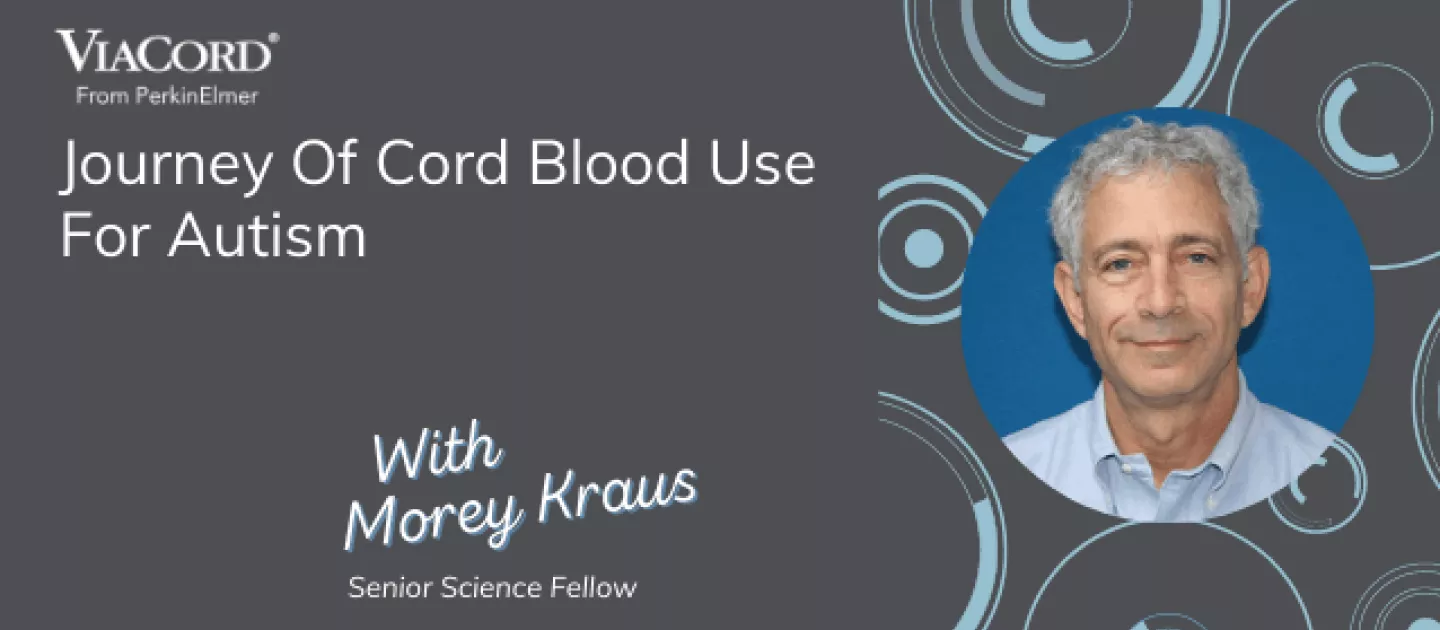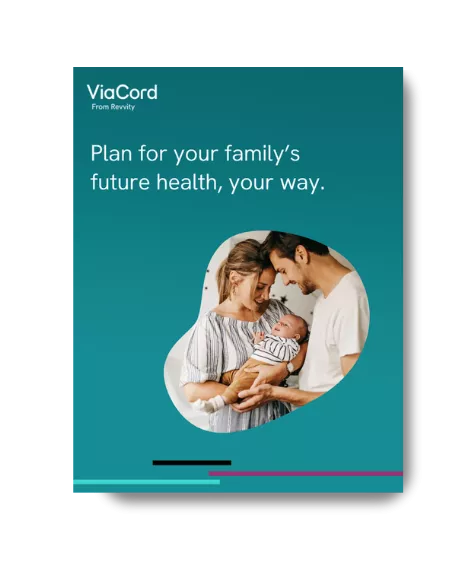Morey Kraus has over 25 years of executive experience in biotechnology. Since 2007 when PerkinElmer acquired ViaCell, a company he co-founded, Morey has served as the Chief Scientific Officer, Research Director, and Advisor to the Medical Scientific Advisory Board at ViaCord. He was also the Director of the Advanced Research Group across PerkinElmer’s Global R&D organization. Today Morey serves as a Senior Science Fellow at PerkinElmer, working on innovative technologies involving many science and engineering disciplines. He has multiple publications, patents, and product launches in the stem cell field and remains involved in product development in the maternal fetal medicine business at PerkinElmer.
Tell us what you are doing now at PerkinElmer and what role you served with ViaCord.
I had to pinch myself last year when I became PerkinElmer’s first Senior Science Fellow. I am now primarily focused on moonshot-type innovations in the global diagnostic business. I feel fortunate I get to apply science and technology on such a grand scale. Prior to this role, I served as the Chief Scientific Officer and Director of Research for ViaCord.
How do you feel about the progress that’s been made using cord blood to help treat Autism?
I feel that progress using cord blood to help treat kids with autism has been one of the most important developments in stem cells and cell therapies in many decades. So many children (~1/54) and their families are impacted by this challenging spectrum disorder. This is very encouraging because cord blood is a natural and abundant resource that can be used to help address some of those important challenges.
I understand you and your team played a significant role in helping get the use of cord blood in treatment of autism to this point. Can you tell us a little bit about that journey?
Talk about a moonshot! When we first raised the concept of conducting clinical trials to treat autism, a common response was, “Are you crazy?”. Since cord blood was widely considered a source of stem cells for bone marrow transplant applications, it was viewed by many as heresy to suggest it could be used to address a disease as disparate as autism. We were told by some of the most prominent figures in clinical transplant that they would never use cord blood to treat autism and told by leading autism specialists that neither stem cells nor cord blood were on their agenda.
There was some early data supporting the hypothesis that cord blood cells could cross the blood brain barrier in children with enzyme deficiency diseases such as Hunters and Hurlers, along with emerging data that cord blood infusions were safe and could help improve motor function in children with cerebral palsy. Additionally, it was known that as much as 75% of Autism cases do not have a known genetic component.
Autism is a syndrome with many possible etiologies including altered neuronal connectivity, immune dysregulation, inflammation, autoimmunity, hypo-perfusion, and others. Stem cells are known to remodel neural pathways, are neuroprotective, immune modulating, anti-inflammatory, and increase perfusion.
Many children starting between 1-2 years of age develop autism, and with approximately 1 million cord blood units in family banks at that time, there were more than enough kids with autism who had their own cord blood banked before it was known they would develop autism that we felt the clinical trials were worth a shot, even if a moonshot. Based on all this information, we were convinced that the bold hypothesis was in need of proof: an infusion of newborn stem cells from cord blood collected at birth might benefit some children who later developed autism.
After many miles and several years of exhaustive networking we were introduced to Dr. Lynn Sickich at the University of North Carolina. Dr. Sickich is known in the world of autism clinical studies. Having tested several potential therapeutics in the past, she recognized that there were not a lot of “drug” candidates in the pipeline to address the root causes of autism. She also felt intrigued by our bold hypothesis that cord blood might help children with autism. Her interest grew regarding the possibility of a clinical study and we introduced Dr. Sickich to Dr. Kurtzberg at Duke so they could discuss the fine details of handling and infusing cord blood stem cells.
Well, after these two met, we were pleasantly surprised to learn they were willing to consider doing the study at Duke University provided that ViaCord was able to cover the anticipated costs of a clinical safety study. Soon thereafter, with ViaCord funding in place, Duke University launched a Phase I Safety study to investigate the safety of cord blood stem cells, a treatment option for children with Autism Spectrum Disorder.
Despite the wide range of effects that accompany this spectrum disorder, the results of the Phase I trial support the safe use in treating children with autism. Furthermore, when treated with an adequate dose, a statistically significant number of children experienced improvement in symptoms across domains, including sensory/perceptual, repetitive/expressive, repetitive/manipulative, and social withdrawal behaviors. These improvements address some of the core challenges of autism, which you might imagine means a great deal to these children and their families.
Once the trials started and throughout the duration of the subsequent Phase II ASD trial, approximately half of the children treated (nearly 100) came from our bank. ViaCord has also continued to support ongoing efforts to expand access to cord blood treatments for autism, including our support for the Cord Blood Association to support data collection on children treated in the Open Access portion of the clinical program.
I’m very proud of the role ViaCord played thus far in bringing this important treatment option to some children with autism, and I am very optimistic cord blood may help many more.
Follow us on Facebook, Twitter, and Instagram to join the conversation and stay up-to-date on cord blood & tissue, genetics, pregnancy, and everything in between!
Disclaimer: Banking cord blood does not guarantee that treatment will work, and only a doctor can determine when it can be used. PerkinElmer and ViaCord do not endorse or make recommendations with respect to research, medication, or treatments. All information presented is for informational purposes only and is not intended as medical advice.
Resources:
NIH. Cord Blood Infusion for Children With Autism Spectrum Disorder (Duke ACT). https://clinicaltrials.gov/ct2/show/NCT02847182
Stem Cells Translational Medicine. Autologous Cord Blood Infusions Are Safe and Feasible in Young Children with Autism Spectrum Disorder: Results of a Single‐Center Phase I Open‐Label Trial. https://stemcellsjournals.onlinelibrary.wiley.com/doi/full/10.1002/sctm.16-0474
PerkinElmer. ViaCord Launches Phase I Clinical Trial with Leading Academic Medical Center to Study Impact of Cord Blood Infusion in Children with Autism. https://ir.perkinelmer.com/news-releases/news-release-details/viacord-launches-phase-i-clinical-trial-leading-academic-medical
Parent’s Guide to Cord Blood Foundation. https://parentsguidecordblood.org/en/family-banking
Genetics in Medicine. Autism spectrum disorders—A genetics review. https://www.nature.com/articles/gim9201151
CDC. Data & Statistics on Autism Spectrum Disorder. https://www.cdc.gov/ncbddd/autism/data.html











